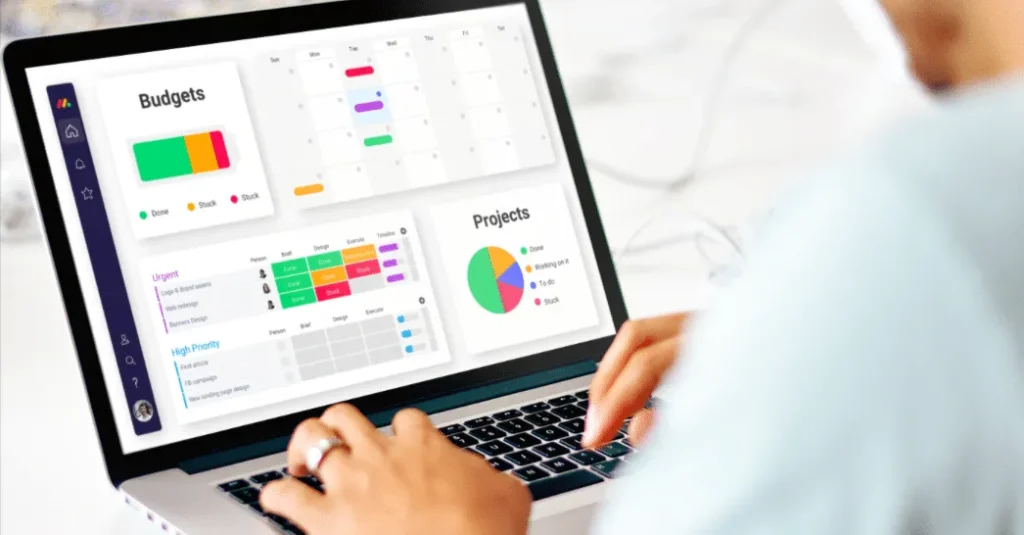1️⃣ Introduction
Being a successful freelancer in 2025 means much more than just having a skill to offer. As the marketplace becomes more competitive and distributed, you’ll need the right tools for freelancers to manage projects, keep clients happy, track time, invoice efficiently, automate tasks, and collaborate remotely. In this article, we’ll walk you through a comprehensive set of tools for freelancers, updated for 2025, to help you operate like a pro — whether you’re just starting or scaling your solo business.
You’ll discover not only what tools to use, but why they matter, how to pick them, and what to watch out for. Let’s dive in.
2️⃣ Why choosing the right tools for freelancers matters
Before we list specific tools, let’s understand why investing time (and sometimes money) into selecting the right tools for freelancers is worth it.
- Efficiency: When you use well-suited tools for freelancers, you reduce time wasted on admin, miscommunication or duplicate work.
- Professionalism: Clients expect smooth workflows, clear deliverables, and timely responses — using strong tools for freelancers helps convey that professionalism.
- Scalability: Even solo freelancers often handle multiple clients. The right toolbox means you can scale without falling apart.
- Differentiation: Many freelancers rely on minimal tool sets. Using advanced or appropriate tools for freelancers gives you a competitive edge.
According to recent research, many lists of “best tools for freelancers” in 2025 emphasise project management, time tracking, financial/invoicing, and automation tools. So yes — choosing the right tools for freelancers isn’t a luxury, it’s a necessity.
3️⃣ Project & task management – core tools for freelancers
One of the first places to get organised is task and project management. These tools for freelancers help you track what needs doing, when, and with what priority.
- For example, platforms like Asana and Trello remain popular for freelancers.
- More advanced options like ClickUp provide all-in-one dashboards, docs, and automations.
- When choosing this kind of tool for freelancers, consider: ease of use, integrations (with calendar, chat, file-storage), mobile access, ability to separate clients/projects, and cost.
Recommended approach:
- Pick one “chief” tool for freelancers for your projects (e.g., ClickUp or Asana).
- Set up a board or list per client.
- Use templates for recurring tasks (e.g., “Onboarding new client”).
- Link your calendar and file storage so everything is in one place — reducing overhead.
By embedding such tools for freelancers into your workflow, you’ll gain clarity, reduce chaos, and deliver better client work on time.

4️⃣ Time-tracking and invoicing – financial tools for freelancers
Another key area where freelancers often struggle is tracking how long tasks take and then converting that into invoices or billing. Good tools for freelancers in this category manage your time, expenses, and client billing.
- One excellent overview lists tools like FreshBooks, Bonsai, and HoneyBook as top project-/business-management tools for freelancers.
- Other lists point out that the lack of proper tools for freelancers in invoicing or accounting leads to stress and missed income.
What to look for:
- Time-tracking (desktop/mobile) so you can bill accurately.
- Expense tracking and client-specific cost items.
- Easy invoice generation, branded templates, and automated reminders.
- Client portal or payment link integration (Stripe, PayPal, etc.).
- Reporting: profit/loss, outstanding invoices, and time by client.
By integrating these tools for freelancers, you’ll not only save time but also project more credibility when you deliver a clean invoice or client portal link.
5️⃣ Communication & collaboration – client-friendly tools for freelancers
Communication is central to freelance success. The right tools for freelancers make it easy to talk to clients, share files, get feedback, and stay aligned without chasing inboxes.
Examples include:
- Shared workspaces like Notion (docs, databases, task-boards) are being used by freelancers to share work and collaborate.
- Real-time communication tools (Slack, Microsoft Teams, or simpler tools) to keep client interaction in one place.
- File-sharing tools (Google Drive, Dropbox) that integrate with your project boards.
Tips for freelancers:
- Create a “client workspace” in your chosen tool for freelancers, where the client can view status, ask questions, or leave feedback.
- Set regular check-ins (weekly or milestone updates) to proactively communicate.
- Use version control or shared folders so you avoid “which draft is this?” confusion.
- Make sure to agree with the client which tool you’ll use upfront — it’s part of the “tools for freelancers” system.
When you get communication configured well with appropriate tools for freelancers, you’ll reduce misunderstandings and increase client satisfaction.
6️⃣ Automation & AI-powered tools – next-gen tools for freelancers
In 2025, the value of automation has become more pronounced. The best tools for freelancers now include AI-powered assistants, workflow automators, and productivity enhancers.
- For instance, an article outlines 17 AI tools for freelancers (via Upwork) in 2025 — indicating a shift toward automating repetitive tasks.
- Another case study emphasises tools like TaskMagic (an automation tool) as transformative for freelancers in 2025.
What these tools for freelancers can do:
- Auto-generate proposals or invoices.
- Move tasks automatically between boards when status changes (via integrations).
- Populate templates with client data (reducing manual entry).
- Use AI-driven note summaries, content drafts, or scheduling assistants.
Selecting automation tools for freelancers:
- Start small: pick one workflow you repeat a lot (e.g., client onboarding) and automate it.
- Ensure the tool integrates with your other tools for freelancers (project board, calendar, invoicing).
- Evaluate time saved vs cost: if a tool for freelancers costs more than the time it saves, reconsider.
- Keep client data secure and verify tool compliance with privacy requirements — especially if working internationally.
Using automation-enabled tools for freelancers gives you more bandwidth to focus on the core of your work (creative, content, development) rather than admin.

7️⃣ Marketing & client-acquisition tools – growth tools for freelancers
Once you’re managing current clients well with your core stack of tools for freelancers, the next frontier is acquiring more clients and marketing yourself professionally. For that, you’ll need growth-oriented tools for freelancers.
Key functions to cover:
- Portfolio/website builder and hosting: to present your work, testimonials, and services.
- Scheduler: let prospects book calls with you directly (reducing back-and-forth). The article “9 Essential Tools To Freelance Like A Pro In 2025” lists scheduling among vital tools for freelancers.
- Email marketing or CRM: keep leads warm, maintain contact with past clients, and upsell new services.
- Analytics/dashboard: track how prospects find you, which services convert best.
Picking marketing tools for freelancers:
- Choose a website builder with good templates and a mobile-friendly design (you want it to reflect your professionalism).
- Pick a scheduler that handles your time zone, availability, and integrates with your calendar — a tool for freelancers that smooths the booking process.
- Consider a lightweight CRM tailored to freelancers (not enterprise-scale) so you don’t get overwhelmed.
- Enable simple analytics: e.g., bounce rate, booking conversion, lead sources. That ties your marketing tools for freelancers into measurable ROI.
When you build a full stack of tools for freelancers that cover both service delivery and client acquisition, you transform from “one-off gigs” to “consistent freelance business”.
8️⃣ File storage, backup & documentation – foundational tools for freelancers
Behind every client job are files, drafts, versions, backups, and documentation. These often get overlooked, but they are crucial. Choosing the right foundational tools for freelancers in this category avoids lost data and inefficiencies.
Important considerations:
- Use a cloud-storage solution (such as Google Drive, Dropbox) that integrates with your other tools. The list of “7 Best Tools for Freelancers in 2025” mentions Google Drive as a simple but essential option.
- Maintain version control and naming conventions: even as a solo freelancer, you should have “ClientName_Date_V1”, etc.
- Set up regular backups: automated duplication or archiving.
- Document your workflows: when you onboard new clients, explain where they find files, how you share deliverables — this builds trust and clarity via your tools.
By investing in reliable storage and documentation tools, you reduce risk (of lost work or confusion) and project a professional image.
9️⃣ Selecting your stack and customising your tools
Now that we’ve reviewed the major categories of tools, let’s talk about how you pick and combine them into a stack that works for you.
✅ Step-by-step:
- Audit your workflows. Write down how you currently handle: lead generation, onboarding, project delivery, billing, and follow-up.
- Identify the biggest pain points: e.g., “I spend 4 hours per week invoicing” or “I lose time searching for files”. These indicate which tools freelancers to prioritise.
- Choose one tool from each category (project management, billing, communication, automation, marketing, storage) that fits your budget and integrates well.
- Start small. Don’t try to adopt all tools at once. Introduce one new tool, test it for a month.
- Customise: label boards with your client names, set templates, create shortcuts, automate recurring tasks. Tailored tools for freelancers are more powerful than generic ones.
- Monitor outcomes: after 3-6 months, review how your tools have impacted your workflow, time spent, revenue, and stress level.
- Iterate: drop tools that aren’t working, optimise further, and train yourself on deeper features.

📝 Key Tips:
- Choose cloud-based tools to remain accessible across devices and locations.
- Ensure tools integrate (calendar links to project board, invoice tool links to project management).
- Prioritise client-facing tools—first impressions count (portfolio site, scheduling link).
- Watch cost: many tools have free tiers; upgrade only when you’re sure value > cost.
- Maintain client-centric naming and logic: your client doesn’t care about your tool-stack; they care about clarity, timely delivery, and professionalism.
By customising your own stack of tools, you’ll build a freelance ecosystem that supports you, rather than fights you.
🔚 Conclusion
In 2025, the landscape for independent professionals is evolving rapidly. To thrive, you’ll need more than your core skill set: you’ll need a well-choreographed set of tools to support you. This means tools for project management, invoicing, communication, automation, marketing, and foundational documentation.
When you choose, implement, and customise the right tools, the benefits are clear: smoother workflows, happier clients, less stress, better time-use, and more income. Take the time to audit your current process, identify pain points, pick the right tools that fit you, and iterate smartly.
Start with one category, refine it, and build your stack one tool for freelancers at a time. Over time, you’ll look back and wonder how you managed before. Good luck on your freelance journey — and here’s to working smarter with the right tools for freelancers.
🔗 External Links for Further Reading
- 11 Must-Try AI Tools For Freelancers In 2025” – Forbes
- 29 Best Tools for Freelancers: 2025 Must-Haves” – BetterProposals
- 14 Best Project Management Tools for Freelancers in 2025” – Millo
- The 16 Best Freelance Apps in 2025” – Zapier
Also Read: Thriving Together: Top Freelance Partner Projects in the UAE for 2025 Success

